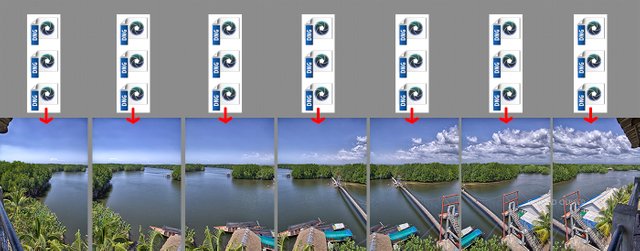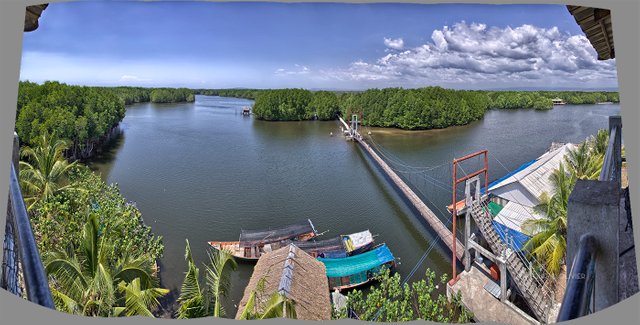These days many of our mobile phones can shoot so-called panoramic images. What if you wanted an image that is super high resolution and high dynamic range? You'd shoot a panoramic hdr. Here are the basic building blocks that I go through when working on this type of task. My A7R has the ability to pan and capture a pano - it's interesting, but I prefer the traditional method.
Visual representation of the hierarchy of images that are exposed at -2, 0, and +2 or you can choose whatever stop range works for you as well as increase this to 5 or 7 frames/stops for each 'segment' of the pano (segment referring to the single still produced from combining the 3 dngs (or 5 or 7 or 9).

As you can see, the amount of images and size requirements add up quickly when shooting with a DSLR or mirrorless as I now do. Fortunately, memory cards and storage on drives is fairly inexpensive. It only gets 'expensive' when you haven't protected your work through redundancy - make copies as drives, DVD's and even SSD's fail in time.
Here I've used photomerge in Photoshop, though I use other software at times to create panoramic imagery. You should have noticed that I was shooting with a wide angle lens (24mm) and in portrait orientation - end result, much larger resolution image. I happened to be using a panoramic head which makes executing the shots a lot easier though this can be done with any tripod. Don't use the excuse that your camera isn't good enough or that your lens is not wide enough to experiment. In general, I purposefully did not drop lens names or models to try to impress or make you feel like you couldn't do the same type of imagery. Though, if you were curious this was done with a Canon 5dii b/c I know someone will ask otherwise.
I've overshot the widest extents including the roofline of the tower that I was standing in knowing there would be some distortion and that I could crop later. Get as much information as you can while you are there.

(koh kong, cambodia)
So this is a result of 21 original images and 7 resulting HDR images to arrive at one panoramic image. The clouds are a bit over-tweaked, but this is just an example. So, if you've never tried something like this I would encourage you to give it a shot as there is so much more powerful software available these days. This image would then be cropped, but I wanted to show you how they look before that step.
A bit of background, I began creating panos in Costa Rica in 1995 by overlapping prints mounted on mat board. I still have them - perhaps I should shoot a pic of them and post. I was so enthralled by the challenge of executing this type of photo and I had no idea that very expensive cameras existed to do this in one go back then. Years back during the age of film, I owned and loved a Noblex 150 UX - very interesting swing lens camera. (yes it's still the age of film for many die-hards!)
I upvoted You
Downvoting a post can decrease pending rewards and make it less visible. Common reasons:
Submit
I'd like to add that this image is just over 180 degrees as you can see the railing on either end and also the amount of overlap in each image (important when software is tracking points)
Downvoting a post can decrease pending rewards and make it less visible. Common reasons:
Submit